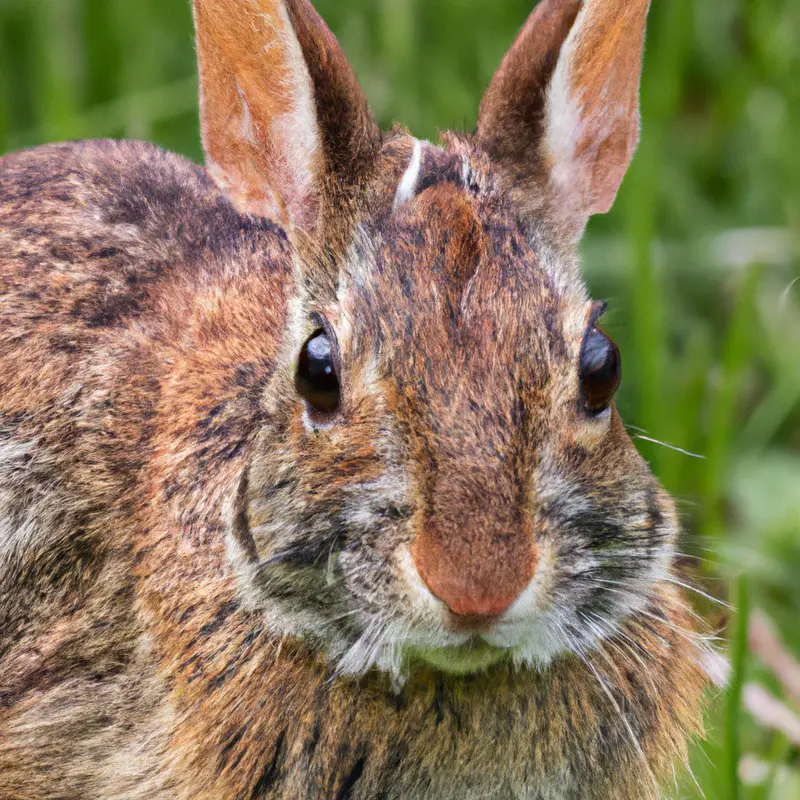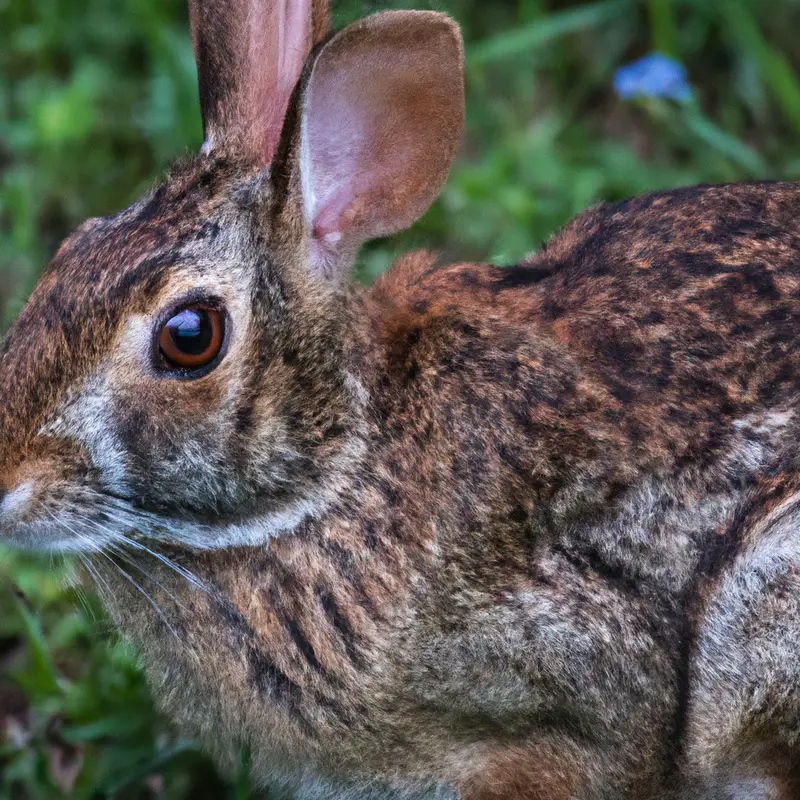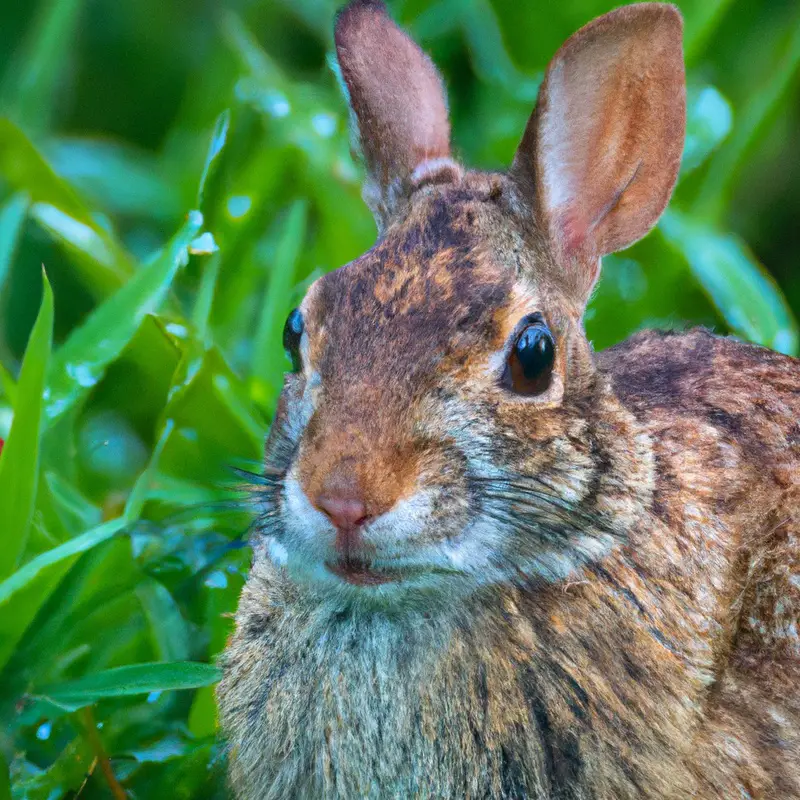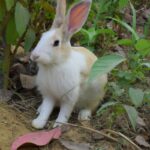Key Takeaways:
- Hunting cottontail rabbits in Arizona requires a valid hunting license.
- Cottontail rabbits are abundant throughout Arizona and can be found in various habitats.
- Hunting seasons and bag limits for cottontail rabbits are regulated by the Arizona Game and Fish Department.
- Hunting techniques for cottontail rabbits include spot-and-stalk, using dogs, or still-hunting.
Are you ready to embark on an exhilarating hunting adventure in the majestic landscapes of Arizona?
Well, look no further than cottontail rabbit hunting! As an expert in the field, I can assure you that chasing these elusive creatures is not only thrilling but also a great way to sharpen your hunting skills.
In this blog, I’ll guide you through everything you need to know about hunting cottontail rabbits in Arizona.
From understanding the hunting regulations and licensing requirements to discovering the best time and places to hunt, I’ve got you covered.
So, lace up your hunting boots and get ready for an unforgettable experience!
Aspect | Pros | Cons |
|---|---|---|
Availability | Abundant population | Seasonal restrictions |
Challenge | Rewarding experience | Requires skill and patience |
Cost | Minimal expenses | Equipment and license fees |
Game meat | Lean and healthy | Preparation time |
Conservation | Population control | Potential impact on ecosystem |
Hunting Regulations and Licensing in Arizona
Arizona Hunting Seasons and Bag Limits
Arizona Hunting Seasons and Bag Limits in Arizona are set by the Arizona Game and Fish Department.
These regulations dictate the specific times of the year when hunting is allowed for different species, as well as the maximum number of animals that can be taken.
It is important for hunters to familiarize themselves with these regulations to ensure they are hunting within the legal limits.
The Arizona Game and Fish Department provides a comprehensive guidebook that outlines the specific hunting seasons and bag limits for each species, including small game, big game, and migratory birds.
Make sure to consult the guidebook before heading out on your hunting trip to stay in compliance with the regulations.
Required Hunting License and Permits
To legally hunt cottontail rabbits in Arizona, you will need the appropriate hunting license and permits. Arizona requires all hunters to possess a valid hunting license, which can be obtained through the Arizona Game and Fish Department.
In addition to the hunting license, you may also need to obtain specific permits depending on the area or season you plan to hunt in.
It is important to check the hunting regulations and requirements set by the Arizona Game and Fish Department to ensure compliance.

Safety and Ethics Guidelines
Safety and ethics are of utmost importance when hunting.
- Always handle firearms safely, keeping them pointed in a safe direction and being aware of your surroundings.
- Follow all hunting regulations and obtain the necessary licenses and permits.
- Treat wildlife with respect by practicing fair chase and only taking shots that you are confident will result in a clean and ethical kill.
- Respect private property and obtain permission before hunting on someone else’s land.
- Practice good sportsmanship by being courteous to other hunters and respecting their hunting spots.
- Dispose of waste properly and leave the hunting area as you found it.
Remember, safety and ethics go hand in hand to ensure a responsible hunting experience.

Best Time and Places to Hunt Cottontail Rabbit in Arizona
Ideal Seasons for Cottontail Rabbit Hunting
For cottontail rabbit hunting in Arizona, the ideal seasons are fall and spring. In the fall, the rabbits are more active as they prepare for winter, making them easier to spot and track.
In the spring, the rabbits become more active again as they search for mates and establish territories.
These seasons provide favorable conditions for successful hunts. It’s important to check the hunting regulations and obtain the necessary permits before heading out.
Good luck!

Top Hunting Locations in Arizona
The top hunting locations in Arizona offer an abundance of opportunities for hunters seeking cottontail rabbits.
Pay a visit to the Havasu National Wildlife Refuge, where you can find an array of wildlife along the Colorado River.
Another great spot is the Kaibab National Forest, known for its diverse terrain and plentiful game.
Don’t forget to explore the Santa Catalina Mountains, home to dense vegetation and an ideal habitat for rabbits.
Lastly, consider checking out the Coconino National Forest, which boasts stunning landscapes and plenty of hunting grounds.
Tips for Scouting and Locating Cottontail Rabbit Habitats
To scout and locate cottontail rabbit habitats, here are some tips:
- Look for dense vegetation: Cottontails prefer areas with thick cover, such as shrubs, brush piles, and tall grasses. These provide them with protection from predators.
- Focus on food sources: Cottontails feed on a variety of plants, including grasses, herbs, and even tree bark. Look for areas with abundant vegetation and signs of feeding like nibbled plants or droppings.
- Pay attention to water sources: Cottontails need access to water, so look for areas near streams, ponds, or watering holes.
- Early morning or late afternoon: Cottontails are most active during these times, so plan your scouting trips accordingly. Look for signs of activity like tracks or fresh droppings.
- Use binoculars: When scouting, use binoculars to scan the landscape for signs of movement or hiding rabbits.
Remember to approach quietly and respect wildlife habitats.
With these tips, you’ll increase your chances of finding cottontail rabbit habitats in Arizona.
Good luck on your hunt!
Necessary Equipment and Gear for Cottontail Rabbit Hunting
Choosing the Right Firearm and Ammunition
When choosing a firearm for cottontail rabbit hunting, it’s important to consider factors such as accuracy, maneuverability, and ease of use. A .22 caliber rifle or a shotgun with small shot size are popular choices for this type of hunting.
The .22 rifle offers precise shot placement, while a shotgun provides a wider pattern for close-range shots.
As for ammunition, opt for hollow point or soft point bullets for rifles, and small shot size for shotguns. It’s crucial to select ammunition that balances power and effectiveness without causing excessive damage to the rabbit.
Essential Hunting Gear and Accessories
Essential Hunting Gear and Accessories To ensure a successful hunting trip, there are a few essential gear and accessories you’ll need.
Firstly, a reliable hunting rifle or shotgun is crucial, depending on your preference and local regulations.
Alongside that, ammunition and a sturdy gun case are necessary for safety and convenience.
You should also invest in camouflage clothing to blend into the environment.
Other useful items include a hunting knife, binoculars for scouting, a backpack to carry your gear, and a hunting license.
Remember to pack water, snacks, and a first aid kit for emergencies.
With these essentials, you’ll be well-prepared for your hunting adventure!
Dressing Appropriately for Rabbit Hunting
When you’re going rabbit hunting, it’s important to dress appropriately to ensure comfort and safety.
Here are a few tips to keep in mind:
- Wear camouflage: Blend in with your surroundings by wearing camouflage clothing that matches the environment.
- Choose comfortable clothing: Opt for lightweight, breathable fabrics that allow for easy movement. Layering is also recommended for temperature control.
- Don’t forget the boots: Invest in a good pair of waterproof boots with excellent traction. You’ll be trekking through various terrains, so grip and protection are key.
- Protect your head and hands: Wear a hat to shield your head from the sun, and gloves to protect your hands from rough vegetation and potential scrapes or scratches.
- Consider eye and ear protection: Safety goggles or glasses can protect your eyes from any stray branches or flying debris, while earplugs can help muffle loud noises from gunshots.
Remember, your clothing should not only keep you comfortable but also blend in with the environment to increase your chances of success.
Happy hunting!
Techniques and Strategies for Successful Cottontail Rabbit Hunting
Stalking and Spot-and-Stalk Hunting Methods
Stalking and Spot-and-Stalk are two popular hunting methods for cottontail rabbits.
Stalking involves moving quietly and slowly through the rabbit’s habitat, paying attention to any sounds or movements.
This method requires patience and a good eye for spotting rabbits hiding in vegetation or darting through open areas.
Spot-and-Stalk is another effective technique, where you scan the area from a distance to spot rabbits before attempting to stalk them.
This method allows you to identify rabbits without disturbing them, increasing your chances of a successful hunt.
Both methods require stealth, patience, and knowledge of rabbit behavior.
Taking your time and being observant will greatly increase your chances of a successful hunt.
Calling and Decoying Techniques
Calling and decoying are effective techniques for hunting cottontail rabbits.
When it comes to calling, mimic the sounds of a distressed rabbit to attract the attention of nearby rabbits.
Use a predator call or a mouth-blown rabbit distress call.
Decoying involves placing a realistic-looking rabbit decoy in a strategic location to draw in curious rabbits.
Position the decoy near cover and use slight movements to make it appear more lifelike.
Remember to use these techniques in areas where cottontail rabbits are known to inhabit for the best results.
Setting up Mock Scrapes and Food Plots
Setting up mock scrapes and food plots can greatly improve your chances of success while hunting cottontail rabbits. Mock scrapes are areas where you create a false rubbing spot for the rabbits to investigate, which can attract them to your hunting location.
Food plots, on the other hand, provide a reliable food source for the rabbits and can help concentrate their activity in a specific area.
When setting up a mock scrape, clear away leaves and debris, then use a stick or a rake to create a shallow depression in the ground. You can also add a lure or scent to attract the rabbits.
For food plots, choose a location with ample sunlight and prepare the soil by removing any rocks or grass.
Then, plant a mix of clover, wheat, or other suitable food sources that rabbits prefer. Remember to check local hunting regulations and obtain necessary permits before setting up mock scrapes or planting food plots.
Field Dressing and Processing Cottontail Rabbit
Proper Field Dressing Techniques
Proper field dressing techniques are essential to ensure the quality and taste of your harvested cottontail rabbit.
Here are some simple steps to follow:
- Safety first: Use a sharp knife and make sure to wear protective gloves to avoid any accidents or contamination.
- Start by removing the fur: Make a small incision along the belly of the rabbit and carefully peel back the skin, cutting as you go to separate it from the meat.
- Remove the internal organs: Cut around the anus and carefully remove the intestines, being mindful not to puncture any organs. Cut through the ribcage to reach the heart and lungs, removing them as well.
- Cool the meat: Rinse the cavity with cold water and pat it dry with a clean cloth. Place the rabbit in a cool environment to allow the meat to chill, which helps enhance its flavor.
- Store or process the meat: Decide whether you want to use the meat immediately or store it. If storing, refrigerate it or freeze it as soon as possible to maintain its freshness.
Tips for Skinning and Butchering Cottontail Rabbit
Skinning and butchering a cottontail rabbit can be a straightforward process.
Here are some tips to help you out:
- Start by removing the fur: Make a small incision at the lower abdomen and carefully peel off the skin, working your way up to the neck. Use your fingers or a knife to separate the skin from the meat.
- Once the skin is removed, it’s time to remove the head: Cut through the neck bone and detach the head from the body.
- Next, remove the feet: Cut through the joints to separate the feet from the legs.
- Now it’s time to gut the rabbit: Make a small incision along the belly and carefully remove the internal organs.
- Rinse the rabbit under cold water to remove any remaining blood or debris.
- Finally, divide the rabbit into smaller portions: Cut the rabbit into legs, loins, and ribs, according to your preference.
Remember to always handle the rabbit with care and use sharp knives to make the process easier.
Happy skinning and butchering!
Delicious Recipes for Cooking Rabbit
I love cooking rabbit, and I have some delicious recipes to share with you. One of my favorites is a classic rabbit stew.
To make it, you’ll need to sauté onions, garlic, and carrots in a bit of olive oil.
Then, add the rabbit pieces and brown them on all sides. Next, pour in some chicken or vegetable broth, add herbs like thyme and rosemary, and let it simmer for an hour or so until the meat is tender.
Serve it over mashed potatoes or with crusty bread.
Another tasty option is to roast the rabbit. Rub it with a mixture of olive oil, salt, pepper, and your favorite herbs and spices.
Then, place it in a preheated oven at 375°F and roast for about 20-25 minutes per pound of rabbit.
Make sure to baste it with the juices every now and then to keep it moist. Serve it with roasted vegetables or a fresh salad for a delightful meal.
Lastly, if you’re feeling adventurous, try making rabbit tacos.
Cook the rabbit meat in a slow cooker with some diced tomatoes, onions, garlic, and spices like cumin and chili powder. Once it’s cooked and tender, shred the meat and serve it in taco shells with your favorite toppings like salsa, sour cream, and fresh cilantro.
It’s a unique and delicious way to enjoy rabbit meat.
I hope you give these recipes a try and enjoy the wonderful flavors of cooking rabbit. Happy cooking!
Frequently Asked Questions about Cottontail Rabbit Hunting in Arizona
Can non-residents hunt cottontail rabbits in Arizona?
Yes, non-residents can hunt cottontail rabbits in Arizona. The state allows both residents and non-residents to hunt cottontail rabbits, which can be a thrilling experience.
Arizona offers a variety of habitats for rabbit hunting, including deserts and grasslands.
Just make sure to obtain the necessary licenses and follow all hunting regulations set by the Arizona Game and Fish Department. Happy hunting!
What is the bag limit for cottontail rabbits in Arizona?
The bag limit for cottontail rabbits in Arizona is 15 rabbits per day and 45 rabbits in possession.
This means you can harvest up to 15 rabbits in a single day of hunting, but you cannot possess more than 45 rabbits at any given time.
It’s important to remember these limits to ensure compliance with state hunting regulations and to help conserve the rabbit population.
Always check the current hunting regulations for any updates or changes before heading out to hunt cottontail rabbits in Arizona.
Are there any restrictions on hunting methods for cottontail rabbits in Arizona?
Yes, there are restrictions on hunting methods for cottontail rabbits in Arizona. According to Arizona Game and Fish Department regulations, it is illegal to use a firearm larger than a .22 caliber rimfire rifle or pistol.
Additionally, it is prohibited to use traps, snares, or poison to hunt rabbits.
Hunting rabbits with the aid of dogs is allowed, but only during specific hunting seasons. It is important to familiarize yourself with these regulations and adhere to them to ensure ethical and legal hunting practices.
Final Verdict
Hunting cottontail rabbits in Arizona can be an exhilarating and rewarding experience for both residents and non-residents. By understanding and adhering to the hunting regulations and licensing requirements, choosing the right equipment, scouting for rabbit habitats, and employing effective hunting techniques and strategies, hunters can increase their chances of success.
Additionally, proper field dressing and processing of the rabbits ensures that no part of the animal goes to waste.
Ultimately, the thrill of the hunt combined with the delicious taste of rabbit meat makes it a pursuit worth exploring. Happy hunting!








